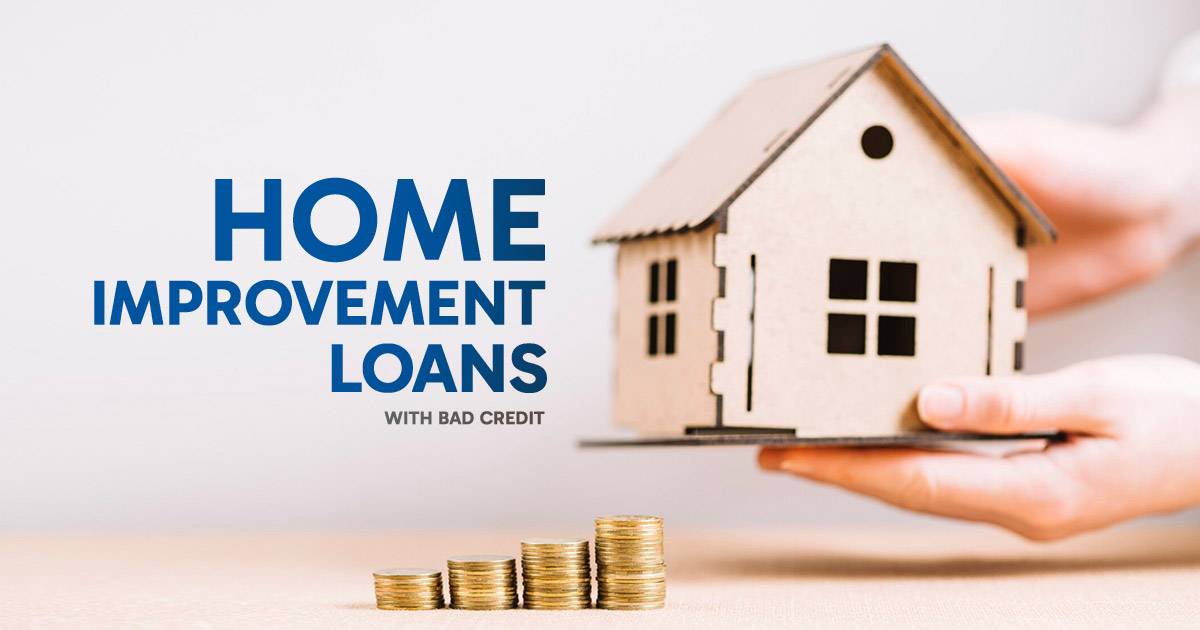Home Improvement Loans with Bad Credit: Options & Strategies for Securing Funding

Homeowners can use home improvement loans as a financial tool to help them afford upgrades, repairs, and renovations. These loans can be used for a variety of projects, like building a new deck, upgrading a kitchen, making your home more energy-efficient, or fixing overdue repairs. A recent study shows that 58% of homeowners plan to spend money on home improvements in the next five years, which highlights how important these loans are for keeping homes in good shape and adding value.
Home improvement loans are crucial because they allow homeowners to make necessary repairs and upgrades, which can make their homes more comfortable, safe, and valuable. Without these funds, many people might have to live with outdated systems, structural problems, or inefficiencies that could end up costing more money in the long run. But obtaining a loan for home improvement can be difficult, particularly if your credit is not great.
Since lenders view borrowers with low credit scores as risky, having bad credit can make it more difficult to get approved for a loan. More interest rates or even the denial of a loan may result from this. But having bad credit doesn’t mean you can’t get a home improvement loan. You can improve your chances of receiving the funds required for home improvements by being aware of how the process operates and by taking some proactive measures.
Understanding Bad Credit and Its Impact
If your FICO score is less than 670, you have bad credit. This can happen if you’ve missed payments, have a lot of debt, or have errors on your credit report. Lenders see a low credit score as a sign that you might not pay them back on time, making you a risky borrower.
Is it hard to get a home improvement loan with bad credit?
Yes, it can be tough to get a home improvement loan with bad credit. Lenders might charge you higher interest rates or ask for collateral, like your car or home, to secure the loan. But it’s not impossible. Some things can help you get a loan even if you have bad credit:
- Steady Income: Having a regular job shows lenders that you can make monthly payments.
- Low Debt-to-Income Ratio: When your current debts are paid off, you have sufficient cash on hand to take on new obligations.
- Co-Signer: You can increase your chances of approval and lower your interest rate by enlisting the help of a co-signer with good credit.
Obtaining a Home Improvement Loan Despite Having Poor Credit
Although it may seem difficult, it is possible to obtain a home improvement loan even with bad credit. Here are some easy steps to help you out:
1. Check Your Credit Score
Start by reviewing your credit report and score. You can obtain a free copy from the major credit bureaus. If you see any mistakes or old information, fix them. Correcting errors can sometimes boost your score quickly.
2. Improve Your Finances
Consider improving your financial circumstances before applying for a loan. Make sure all of your bills are paid on time and settle any debts you may have. When a borrower has a low debt-to-income ratio, it indicates that they have sufficient income to make their monthly loan payments. Also, avoid taking on new debt.
3. Explore Alternative Lenders
Not every lender is the same. Some lenders specialize in assisting people with bad credit. These lenders might look at other things, like your job history and income. Conduct some research to find a lender who can meet your needs.
4. Consider a Co-Signer
If you know anyone with good credit, ask them to cosign your loan. A co-signer can make it easier for you to get approved and could even get you a lower interest rate. Just make sure they understand that if you are unable to pay, they will be responsible.
5. Look into Secured Loans
You can offer something valuable, like your car or home, as collateral to get a secured loan. Because your collateral may be taken if you fail to make payments, this gives lenders a sense of security. But take caution: you might forfeit the collateral you offered if you are unable to pay.
6. Prequalify for Loans
Prequalifying for a loan with a soft credit check, which has no bearing on your score, is allowed by many lenders. Prequalifying gives you an idea of the terms you might get, like the interest rate and loan amount. This helps you compare offers and pick the best one.
7. Explore Government Programs
Check out government-insured loans like FHA 203(k) or FHA Title I loans. These loans can assist you with home improvements and have less stringent credit requirements. Check if you are eligible for any of these initiatives.
Guaranteed Loan Approval: Researching the Right Lenders
To conclude, obtaining a loan for home renovation even with poor credit is feasible. Follow the steps, like checking your credit score, improving your finances, and looking at different lenders. It’s also really important to research banks and lenders that are more likely to approve loans for people with bad credit. Focus on those who help people with low credit scores, and think about secured loans or getting a co-signer.
Every lender has different rules, so finding the right one is key. By being proactive and informed, you can reach your home improvement goals and boost your home’s value, even with bad credit.
